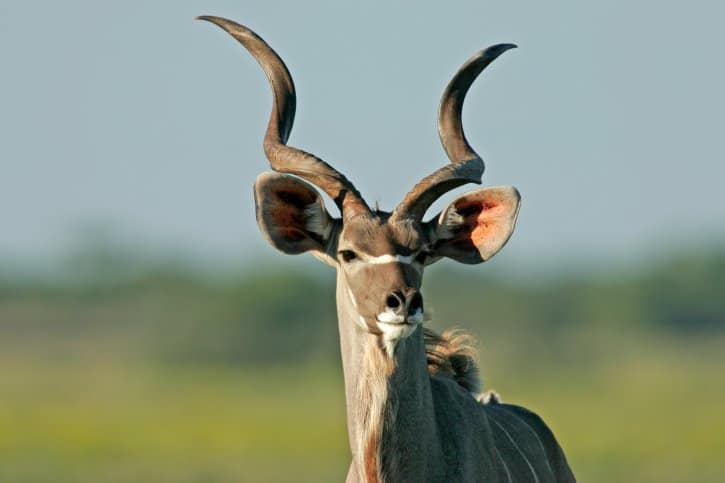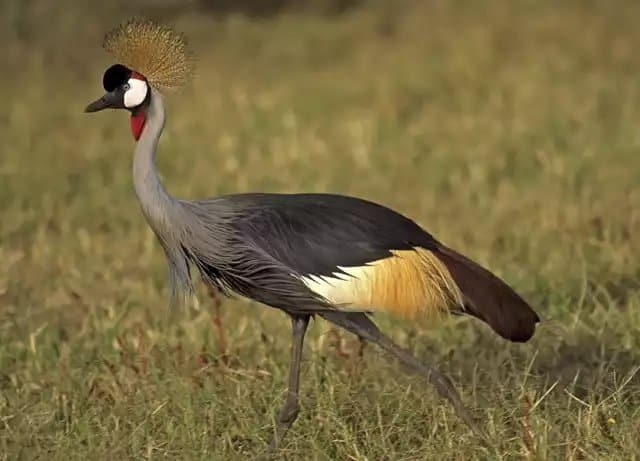Last updated on September 11th, 2021 at 03:18 pm
In this article, we take a look at two of the continent’s most iconic animals,
1. Greater kudu (Tragelaphus strepsiceros)
Size and weight: Males can measure 195-245cm (6.4-8ft) and weigh up to 315kg (694lbs)
Habitat: Savannah, woodland, avoids open grasslands and forests
Status: From least concern to endangered depending on the location in Africa
Interesting facts
1. They might look big and clumsy but they are actually swift and excellent jumpers. They can clear a fence 2m (6.6ft) high!
2. They have long necks that they use to reach food on high branches. The giraffe is the only animal that beats their impressive reach.
3. Only the males have horns, which take a spiral shape and can grow up to 100cm (over 3ft)
2. Grey Crowned crane (Balearica regulorum)
Size and weight: Adults measure 100-110cm (3.3-3.6ft) from head to tail with a 180-200cm (5.9-6.6ft) wingspan. They weigh 3-4kg (6.6-8.8lbs)
Habitat: Wetlands and open grasslands
Status: Vulnerable
Interesting facts
1. They aren’t picky eaters; they will feed on insects, lizards, amphibians, fish, grasses and seeds. This has helped them adapt to changes to the landscape made by humans. In fact, they are often found around agricultural lands and man-made wetlands.
2. Thanks to their long hind toe, they are one of only two species of crane that perch and sometimes build nests in trees. Staying in trees helps these cranes avoid predators on the ground.
3. On average, they lay 2-3 eggs at a time. This is the largest average egg clutch of any crane.



